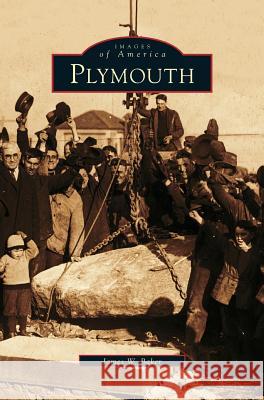Plymouth » książka
Plymouth
ISBN-13: 9781531606312 / Angielski / Twarda / 2002 / 130 str.
Plymouth is best known as the Pilgrim landing place, but history did not stop when the dishes were cleared away from the first Thanksgiving. A prosperous fishing village before the War of 1812, Plymouth developed mills and factories to line its modest brooks during the Industrial Revolution, and elegant dwellings were built to replace humble Colonial homes. Steamboats and the railway brought waves of immigrants and summer visitors, transforming the small Yankee village into a bustling town. Later, the mills closed, tourist traffic replaced the clatter of machinery, and massive housing developments transformed the town as the kaleidoscope of history turned yet again. Plymouth's intriguing past is not altogether lost. In Plymouth, the reader will find the elm-shaded streets, mill villages, modest shops, and rustic pond-side cottages that generations of residents and visitors have loved. The reader will see vanished landmarks, such as the Samoset House and the Mayflower Inn, the Cornish and Burton schools, and the Leyden Street Casino. From the world's largest rope manufactory (Plymouth Cordage) to Uncle George's famous woolly horse, from Water Street's ancient wharves and chandleries to the storm of 1898, and from Pres. Warren G. Harding's tercentenary visit to Richard Nixon's welcome of the Mayflower II in 1957, the best of the town's visual history is gathered in Plymouth.
Plymouth is best known as the Pilgrim landing place, but history did not stop when the dishes were cleared away from the first Thanksgiving. A prosperous fishing village before the War of 1812, Plymouth developed mills and factories to line its modest brooks during the Industrial Revolution, and elegant dwellings were built to replace humble Colonial homes. Steamboats and the railway brought waves of immigrants and summer visitors, transforming the small Yankee village into a bustling town. Later, the mills closed, tourist traffic replaced the clatter of machinery, and massive housing developments transformed the town as the kaleidoscope of history turned yet again. Plymouths intriguing past is not altogether lost. In Plymouth, the reader will find the elm-shaded streets, mill villages, modest shops, and rustic pond-side cottages that generations of residents and visitors have loved. The reader will see vanished landmarks, such as the Samoset House and the Mayflower Inn, the Cornish and Burton schools, and the Leyden Street Casino. From the worlds largest rope manufactory (Plymouth Cordage) to Uncle Georges famous woolly horse, from Water Streets ancient wharves and chandleries to the storm of 1898, and from Pres. Warren G. Hardings tercentenary visit to Richard Nixons welcome of the Mayflower II in 1957, the best of the towns visual history is gathered in Plymouth.











